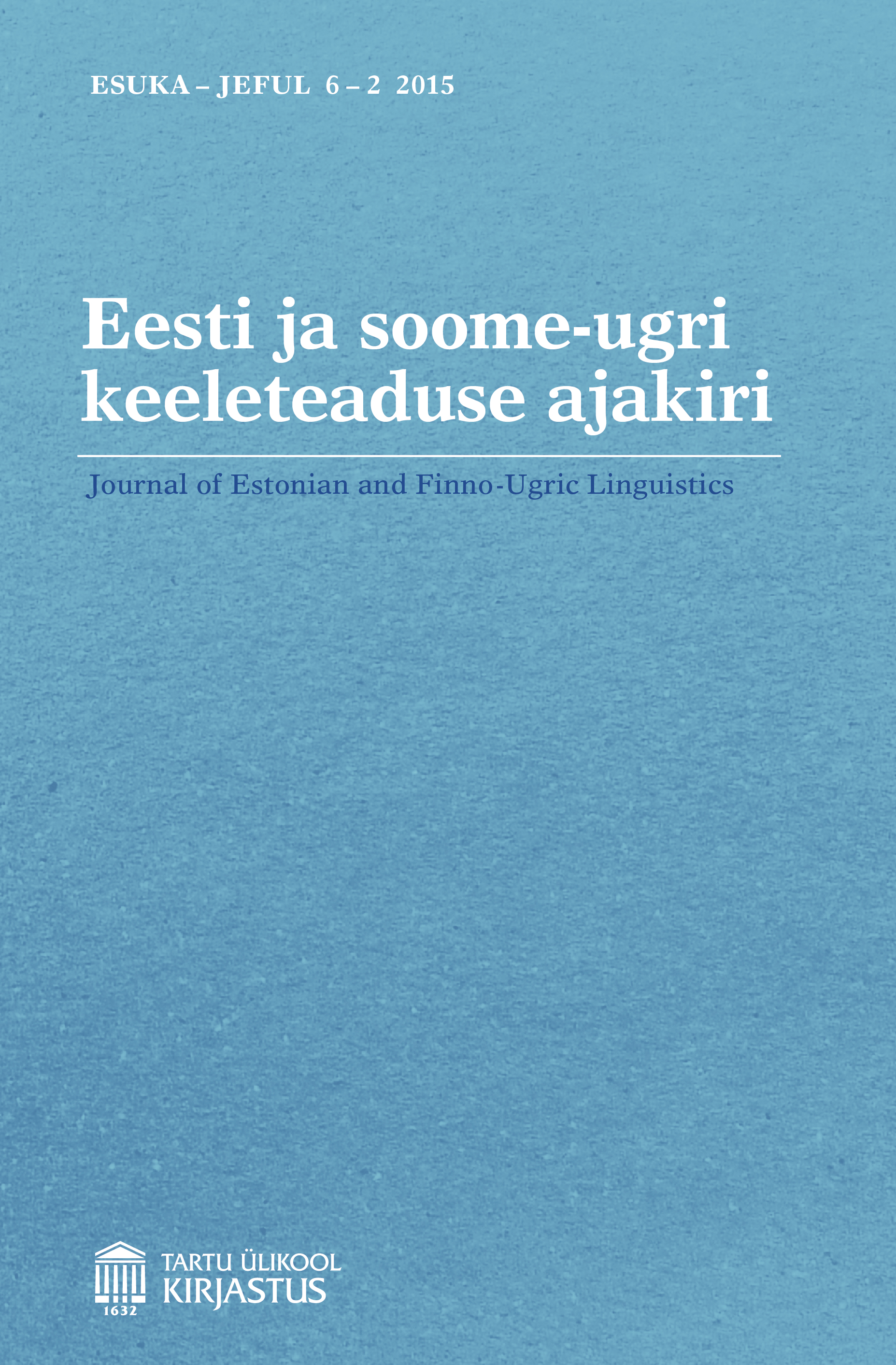On the referential interpretation of computer-mediated narratives
DOI:
https://doi.org/10.12697/jeful.2015.6.2.04Keywords:
joint attentional scenes, narratives, social cognitive linguistics, deixis, HungarianAbstract
The paper explores the referential interpretation of narratives through a case study of computer-mediated narrative discourse, a thread of Hungarian stories on an online discussion site. In particular, we are looking to find out what directs the addressee’s attention and how as she attempts to interpret such stories. Adopting the perspective of social cognitive linguistics, we interpret narrative discourses as joint attentional scenes whose interacting participants contribute to the intersubjective construal of referential scenes (including narrative ones) by directing and following each other’s attention. The main results of the investigation are as follows. 1) In the construal of the physical and social worlds of these stories, a key role is played by the deictic relation based on spatial and temporal contiguity which connects the world of the story to the world of the narrative discourse, interpreted as a joint attentional scene. 2) These narrative discourses frequently objectivize, in the form of metapragmatic reflections, both the situatedness of the referential centre (which lies with the storyteller), and the narrator’s subjective attitude to the narrated events.Downloads
Download data is not yet available.
Downloads
Published
2015-12-18
How to Cite
Laczkó, K., & Tátrai, S. (2015). On the referential interpretation of computer-mediated narratives. Eesti Ja Soome-Ugri Keeleteaduse Ajakiri. Journal of Estonian and Finno-Ugric Linguistics, 6(2), 85–103. https://doi.org/10.12697/jeful.2015.6.2.04
Issue
Section
Articles


